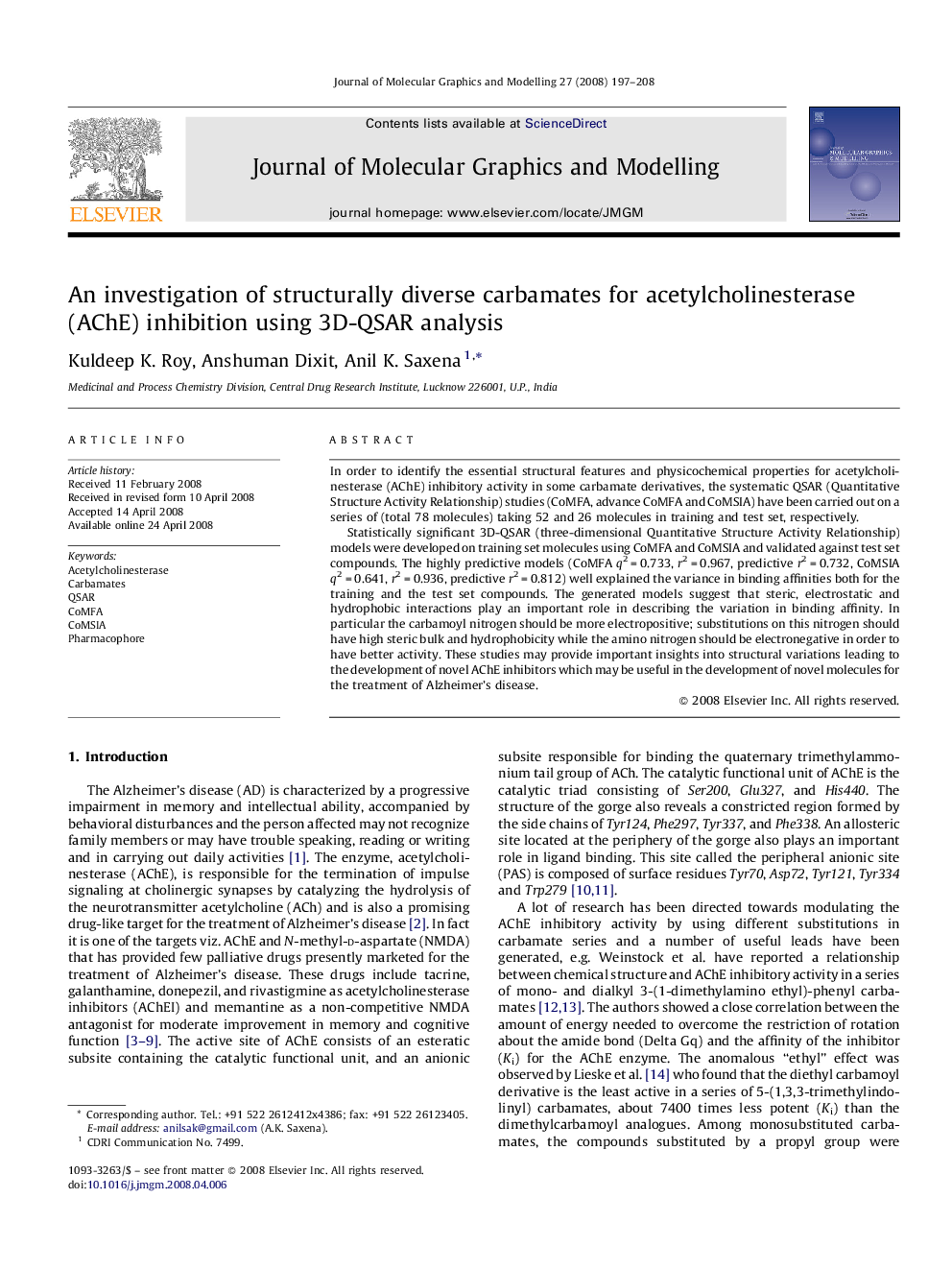| Article ID | Journal | Published Year | Pages | File Type |
|---|---|---|---|---|
| 443855 | Journal of Molecular Graphics and Modelling | 2008 | 12 Pages |
In order to identify the essential structural features and physicochemical properties for acetylcholinesterase (AChE) inhibitory activity in some carbamate derivatives, the systematic QSAR (Quantitative Structure Activity Relationship) studies (CoMFA, advance CoMFA and CoMSIA) have been carried out on a series of (total 78 molecules) taking 52 and 26 molecules in training and test set, respectively.Statistically significant 3D-QSAR (three-dimensional Quantitative Structure Activity Relationship) models were developed on training set molecules using CoMFA and CoMSIA and validated against test set compounds. The highly predictive models (CoMFA q2 = 0.733, r2 = 0.967, predictive r2 = 0.732, CoMSIA q2 = 0.641, r2 = 0.936, predictive r2 = 0.812) well explained the variance in binding affinities both for the training and the test set compounds. The generated models suggest that steric, electrostatic and hydrophobic interactions play an important role in describing the variation in binding affinity. In particular the carbamoyl nitrogen should be more electropositive; substitutions on this nitrogen should have high steric bulk and hydrophobicity while the amino nitrogen should be electronegative in order to have better activity. These studies may provide important insights into structural variations leading to the development of novel AChE inhibitors which may be useful in the development of novel molecules for the treatment of Alzheimer's disease.
